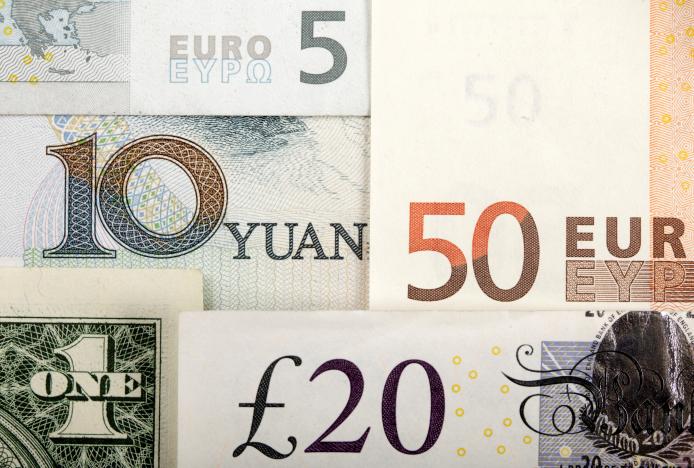
The dollar was on course for its worst start to a year in more than a decade on Tuesday after a trade adviser to President Donald Trump added to signs the new administration may be trying to talk its currency down.
Suggestions by the head of Trump’s new National Trade Council, Peter Navarro, that Germany was benefiting from a “grossly undervalued” exchange rate drove the euro 0.6 percent higher and sparked a broader fall in the dollar.
Already down 1 percent this week against the yen after Trump’s ordering of a ban on travelers from seven mainly Muslim states spurred protests worldwide and across the United States, the dollar fell another half percent in the European morning.
Navarro’s words, quoted by the Financial Times, followed comments by both the president and his Treasury nominee Steven Mnuchin on the strength of the dollar in relation to other trade partners in recent weeks.
“I don’t think this is a dollar debasement policy,” said Stephen Gallo, head of European FX strategy with Bank of Montreal. “But they are trying to go into talks (on trade deals) with a strong hand which says: you guys have been debasing your currencies, we think you owe us something.”
Gallo, like many in markets since Trump’s election last November, expects the dollar to benefit from a push to encourage repatriation of corporate capital to the United States and other moves to support growth.
But the dollar has fallen steadily since the middle of December, cast by some as a necessary shakeout in market positioning but by others as an evaporation of faith in the new administration.
On top of that are signs that inflation in Europe is picking up after years in the doldrums.
“This morning you have a French CPI upside surprise and a massive Spanish surprise. Bund yields are up and that is pulling the euro higher,” said Richard Cochinos, head of European G10 FX Strategy at Citi.
“We do have the month end which is creating a dollar flow. Our quant team has put out a note saying that should be a dollar negative flow.”
By 1230 GMT, the dollar traded 0.5 percent weaker on the day at 113.23 yen. It was down 0.6 percent at $1.0758 per euro.
That all put it on course for a fall of 2.1 percent on the month against a basket of currencies.
Investors bought the dollar strongly after Trump’s victory last November on the assumption that he would spend aggressively on infrastructure and encourage a rise in inflation.
But that enthusiasm has also waned in the absence of much detail on fiscal policy in his first 10 days in charge.
“Trump’s travel ban – and his associated decision to fire the acting Attorney General – dominates sentiment and remains good for Treasuries, the yen and gold, but bad for bonds and the dollar,” said Kit Juckes, a strategist with Societe Generale in London.
“My bias is still that we’ll get back to the Trump economic program, and the implications for Fed policy, before too long. More prosaically, markets will focus on the US jobs data due Friday.”
The Fed starts a two-day meeting on Tuesday and any improvement in the board’s view of the economy in its statement on Wednesday would be liable to trigger bets on another rise in interest rates within months.
(Writing by Patrick Graham; Editing by Dominic Evans)

